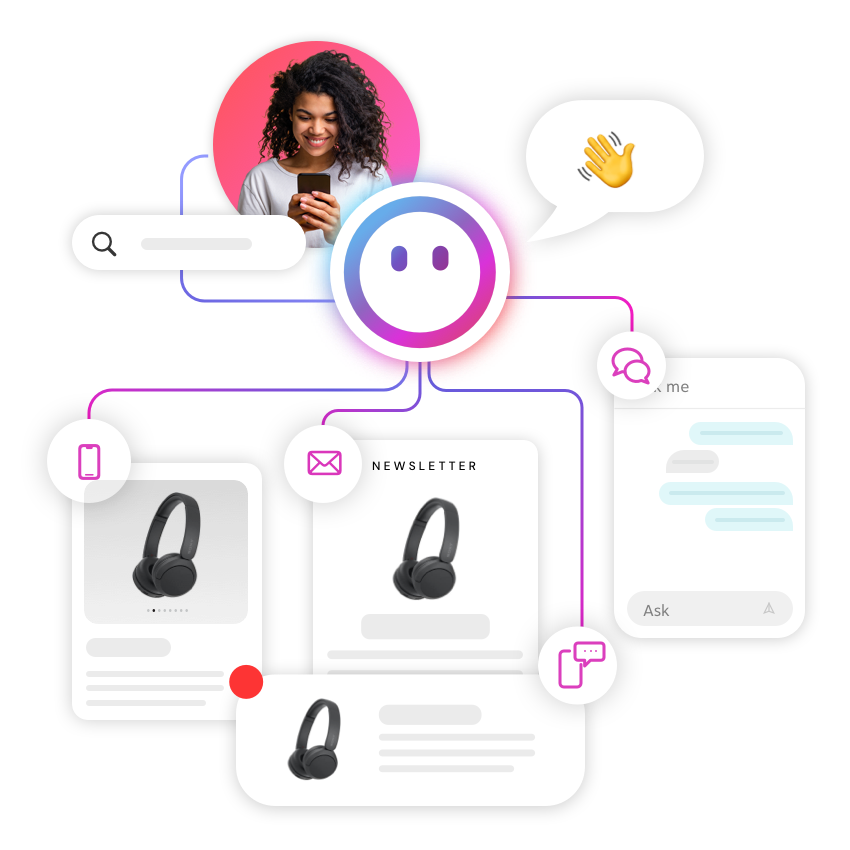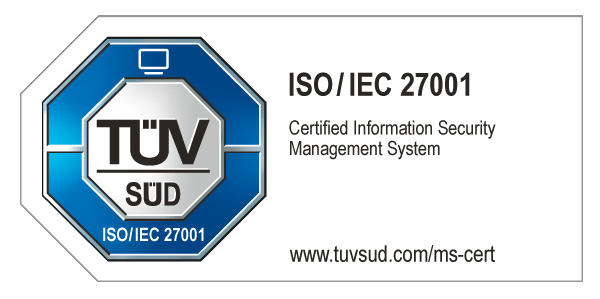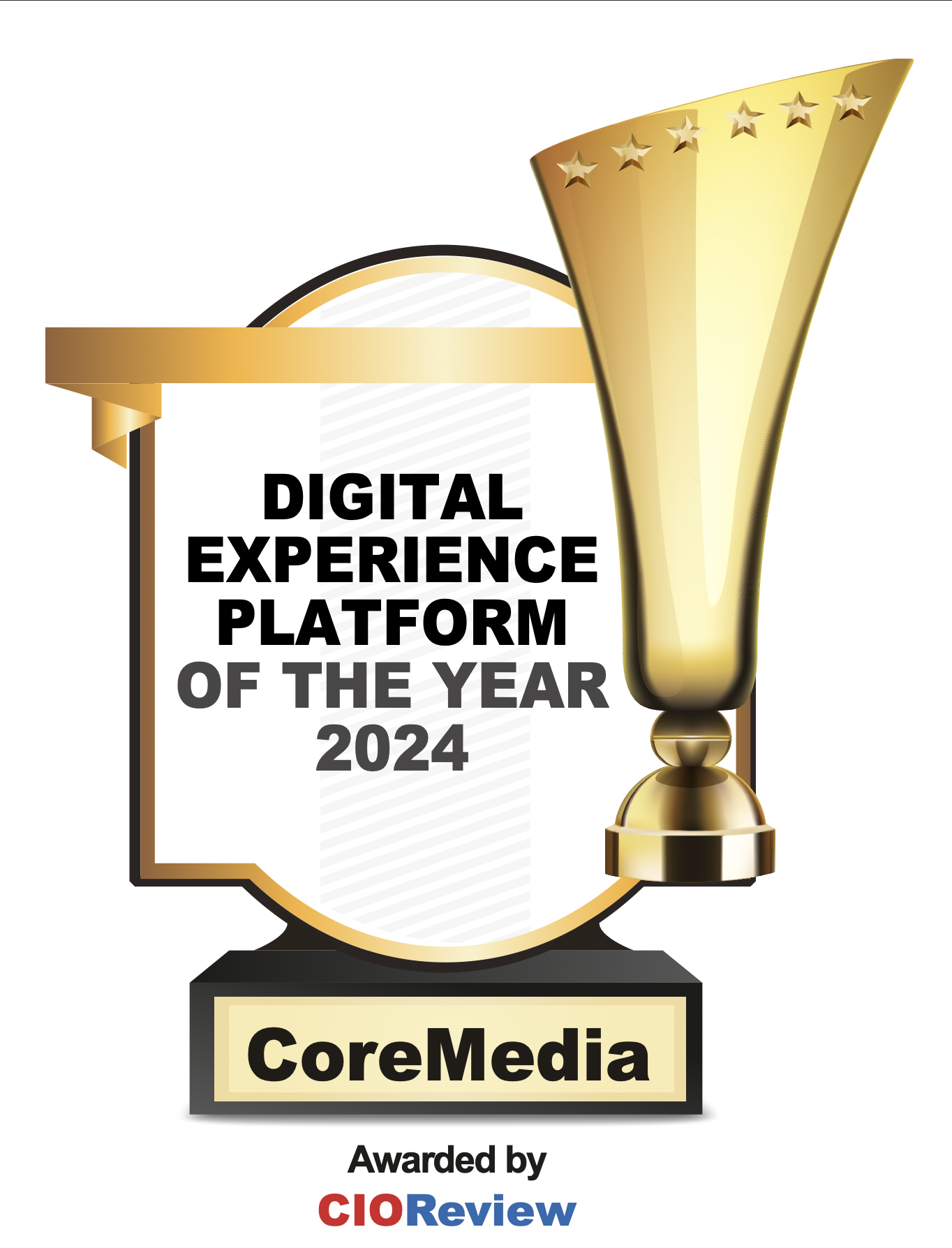It’s All About the Experience
Most savvy brands and retailers recognize that great content is at the core of every great online experience. That’s true today and it will remain true in the future. But building and delivering consistent, compelling omni-channel experiences to consumers across multiple devices is more complicated than ever.
For years, brands and retailers have had to cobble together a digital experience for customers that ended up being incomplete and inconsistent. This is because every new digital channel – from desktop to mobile, wearables to voice – has required its own set of tools, often based on unique and sometimes incompatible standards.
Online customer interactions have been further fragmented by self-contained and narrowly-focused point solutions that provide limited functionality and aren’t well integrated. For example, eCommerce platforms are good at handling transactions, but terrible at content management. Web content management systems can deliver beautiful brand experiences, but can’t handle purchases or deliver content to mobile apps.
Furthermore, this complexity has been magnified as companies expand into global markets – each with its own language, marketing demands, and regulatory climate.
The resulting patchwork of technologies and experiences is frustrating for consumers and expensive for companies. It’s been clear for a while now that we need something new.
That something now has a name: the Digital Experience Platform (DXP).
DXP Insight: Skepticism and Complexity
The research firm a DXP as a “collection of technologies for creating, orchestrating, and managing the digital experience delivered to customers, prospects, employees, and other stakeholders… across the lifecycle of the customer relationship, from marketing to sales through service.”[1]
This sounds like just what the doctor ordered. But before we get carried away, let’s keep in mind that deploying an enterprise-wide DXP is a complex undertaking. And while a handful of companies claim to provide an out-of-the-box DXP solution, they face real skepticism from potential buyers.
In its survey of 300 global business and IT leaders, DCG noted that a solid majority (66%) of respondents prefer a heterogeneous approach toward implementing DXPs. They also found that 56% identified ease of integration as an important factor influencing their choice.[2]
An Incomplete Vision
What this means is that a best-of-breed approach is clearly the preferred strategy. At the moment, there’s no real consensus on what the exact components should be, but most software vendors and analyst firms agree that the following technologies are a minimal requirement:
Diagram DXP
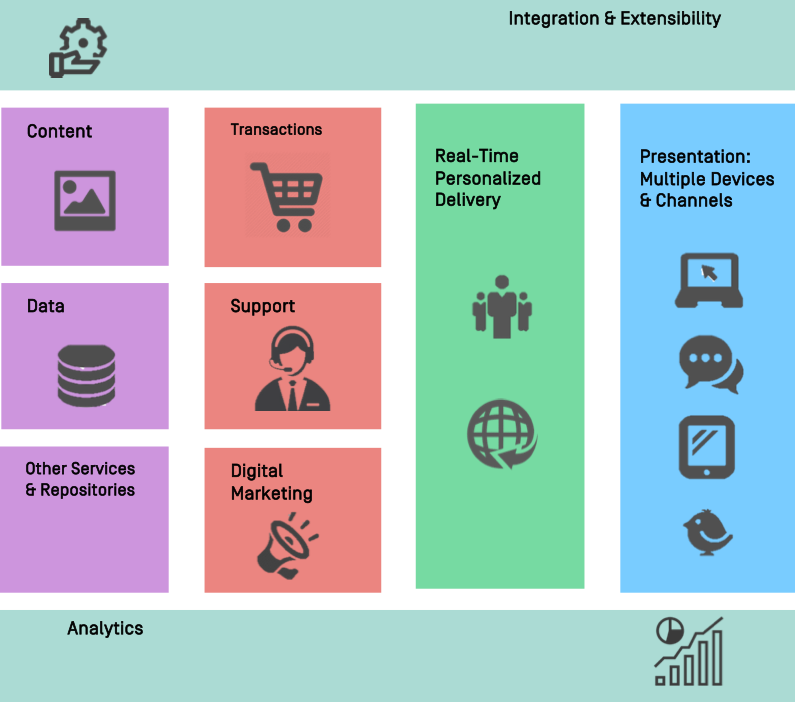
This graphic captures the critical components required for most DXP solutions, but we at CoreMedia think this vision is incomplete – and many of the world’s top brands agree with us. What’s missing in this framework is what could be called the “Experience Composition and Preview” layer; that is, the ability to instantly preview the customer experiences in any permutation.
Here’s what the revised diagram looks like when we inject this critical piece:
Diagram Missing Piece
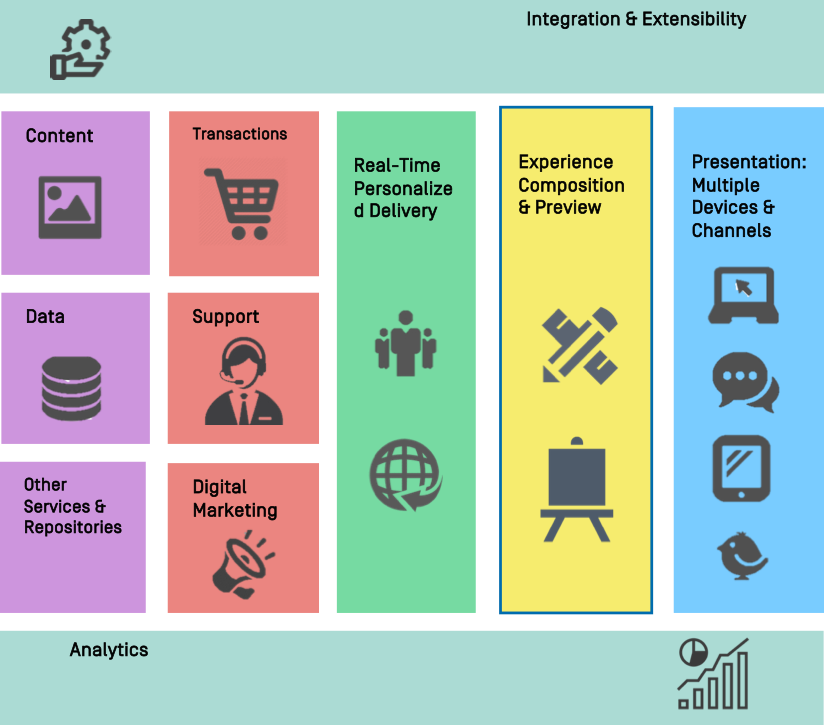
What is Experience Composition and Preview?
Before brands and retailers can begin rolling out new online customer experiences across all channels, content creators need the ability to build, test, and preview them via an experience composition layer, along with the appropriate toolsets, workflows, and collaboration capabilities.
The key functional elements of this solution layer include the ability to:
- Access content, products, and assets from any repository, including an eCommerce system or a headless CMS, via a single, intuitive UI
- Integrate content in real time to ensure everything is always instantly up-to-date
- Collaborate across global, multi-disciplinary teams in content research and creation
- Preview any digital experience for mobile, tablet, desktop, digital signage, social networks, and more
- Quickly translate copy into multiple languages for global campaigns without modifying the base assets
- Leverage customer data from numerous systems in order to test and optimize the digital customer journey
In the future, the real competition among DXP players will be who can deliver the best composition and content management suite at the most attractive price point. This is welcome news for us here at CoreMedia because our solution does exactly that. The image below shows CoreMedia Studio, our state-of-art interface for experience composition and preview.
Experience Preview
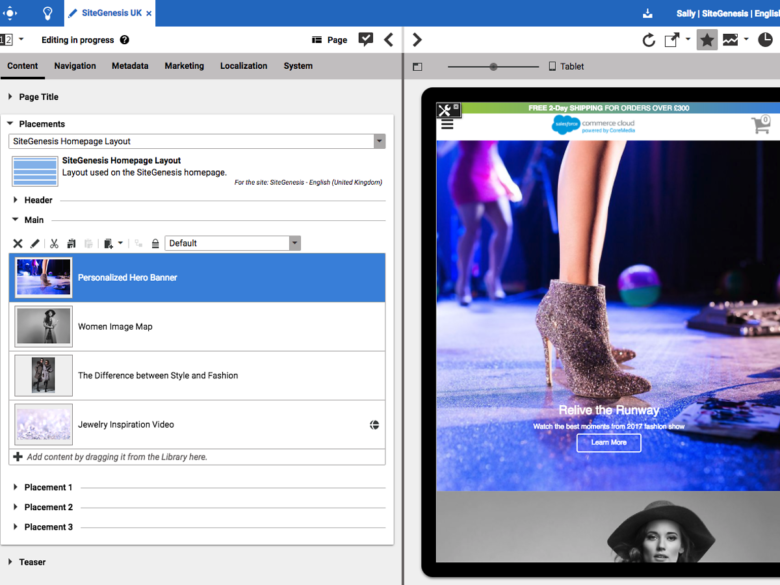
In the future, the real competition among DXP players will be who can deliver the best composition and content management suite at the most attractive price point. This is welcome news for us here at CoreMedia because our solution does exactly that. The image below shows CoreMedia Studio, our state-of-art interface for experience composition and preview.The preview layer is a big area of focus for some of our customers, particularly those in the luxury retail space, because customer experience is such a competitive advantage in this sector. A better experience on a high-end shopping site often means more revenue and more market share.
The Key to Enterprise Headless CMS
But this functionality is not just critical for luxury brands – it’s also becoming a prerequisite for anyone looking to take advantage of so-called “headless” technology and deploy it at scale.
A headless CMS provides the ability to separate product pages and other content from the actual presentation and layout. This means content providers and retailers are no longer required to render every single end-user experience. Instead, this can be left to the individual user agent, which delivers the best possible cross-channel experience, allowing companies to focus more resources on creating better user experiences.
There are lots of headless CMS vendors out there, but in fact none of them can provide the full range of enterprise-grade capabilities that CoreMedia can. Nor can most eCommerce platforms provide the robust headless CMS capabilities that customers need. This includes advanced APIs and easy integration, customizability, support for different integration scenarios, the ability to manage and dynamically deliver the customer experience across different digital touchpoints – and the ability to preview all of it.
To paraphrase an old proverb, companies want to look before they leap.
And so, to sum up:
- In order to compete, companies need to provide a stellar customer experience across all touchpoints.
- Increasingly, companies need a sophisticated digital experience platform, but they want to keep their options open.
- IT departments prefer flexible architectures, but these are often cumbersome for customer-facing professionals.
- The right CMS gives companies the ability to preview the customer experience before build and deployment.
- The DXP that does this best is CoreMedia Content Cloud.
